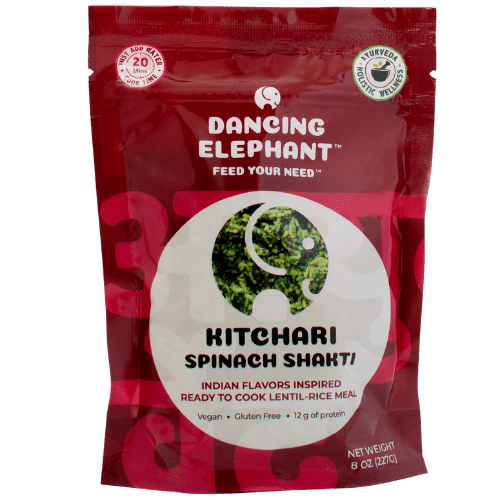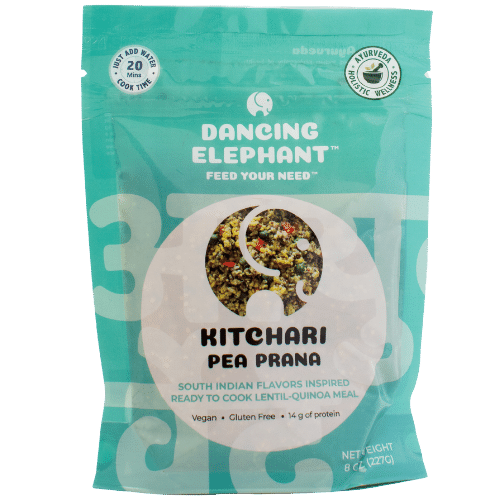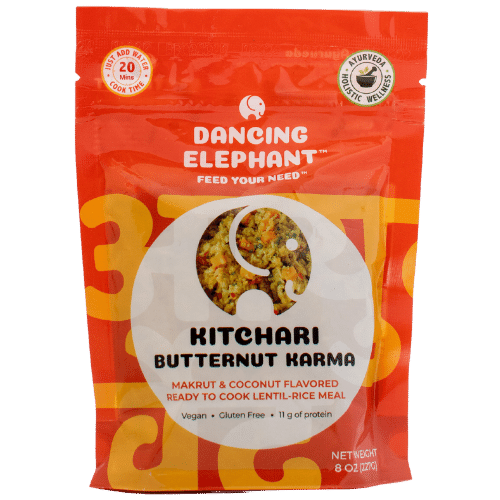What is Kitchari?
Kitchari, a staple in Ayurvedic cuisine, is a nourishing and versatile dish that is highly regarded for its ability to balance all three doshas - Vata, Pitta, and Kapha. This makes it a 'tri-doshic' food, a rare classification that signifies its adaptability to any individual's unique constitution. In essence, Kitchari is a meal that caters to everyone's needs, irrespective of their physical constitution.
The core ingredients of Kitchari are typically lentils, rice, ginger, and turmeric, all cooked together with water to create a dish that's reminiscent of an Indian-style risotto. This comforting meal is often compared to the Western concept of "chicken soup for the soul" due to its soothing and nourishing properties.
The choice of lentils can vary, with different types being used based on personal preference or what's available in the kitchen. However, split, peeled mung lentils are often favored due to their easy digestibility. The addition of ginger and turmeric not only imparts a warm, earthy flavor but also enhances the dish's health benefits, given these spices' anti-inflammatory and digestive properties.
Kitchari is a canvas for culinary creativity, allowing for the addition of various spices and ingredients that cater to individual tastes or family traditions. This flexibility is a testament to the dish's adaptability and its central role in Ayurvedic cooking.
The Dancing Elephant Kitchari
Our version of Kitchari stays true to these principles. We use split, peeled mung lentils for their gentle effect on the digestive system, and we incorporate generous amounts of ginger and turmeric. In the spirit of individuality and creativity, we've also added our own unique flavor twists to this classic recipe.
Being naturally gluten-free and plant-based, Kitchari is a wholesome choice for various dietary preferences. Its preparation is straightforward and quick - all you need is heat, water, and around 15 minutes of your time. With our Kitchari, we're ready to bring fresh, balanced, and personalized Ayurvedic nutrition to your table.
The History of Kitchari
Kitchari, also spelled as khichdi, has a long and storied history in the Indian subcontinent, dating back several centuries. Its roots can be traced to the ancient practice of Ayurveda, a holistic healing system that originated in India over 5,000 years ago. Ayurveda places a strong emphasis on diet as a means of maintaining health and balance in the body, and Kitchari has been a cornerstone of this dietary approach due to its nourishing and balancing properties.
The word "Kitchari" itself means a mix or a mess, which aptly describes the dish's combination of rice and lentils. Over time, this basic recipe has been adapted and modified across different regions of India, resulting in a wide variety of Kitchari recipes today. Some versions include vegetables, others incorporate different types of lentils or grains, and the spice mix can vary greatly depending on regional preferences.
Kitchari's significance extends beyond its role as a dietary staple. In Ayurvedic medicine, it's often used as a cleansing and detoxifying food. Its simplicity and ease of digestion make it an ideal choice for times of illness or during cleansing fasts. It's also commonly used as a baby's first solid food in India due to its gentle nature and nutritional profile.
In the broader cultural context, Kitchari holds a place of honor in many Indian traditions and rituals. It's often served at religious ceremonies and is a common comfort food in Indian households. Despite its humble ingredients, Kitchari's rich history and deep cultural significance make it a truly iconic dish in Indian cuisine and Ayurvedic practice.
How Kitchari fits into other diets
Kitchari's versatile nature allows it to fit seamlessly into various modern-day diets:
- Vegetarian and Vegan Diets: Kitchari is inherently plant-based, making it an excellent choice for vegetarians and vegans. The combination of rice and lentils forms a complete protein, providing all the essential amino acids that the body needs. This makes Kitchari a nutritious and satisfying meal for those following a plant-based diet.
- Gluten-Free Diets: Kitchari is naturally gluten-free, as it's made from rice and lentils. This makes it a safe and delicious option for those with celiac disease or a sensitivity to gluten.
- Ayurvedic and Detox Diets: In Ayurveda, Kitchari is often used for detoxification and cleansing. Its simplicity and ease of digestion give the digestive system a break, allowing the body to focus on healing and detoxification. Those following an Ayurvedic diet or a detox regimen often consume Kitchari for a period of time.
- Low-Fat and Heart-Healthy Diets: Kitchari is low in fat and high in fiber, making it a heart-healthy choice. The lentils in Kitchari are a good source of soluble fiber, which can help lower cholesterol levels and promote heart health.
- Weight Management Diets: Kitchari is a balanced meal that's high in protein and fiber, both of which can help control hunger and aid in weight management. It's also relatively low in calories, making it a good choice for those looking to maintain or lose weight.
- Anti-Inflammatory Diets: The spices used in Kitchari, such as turmeric and ginger, have anti-inflammatory properties. This makes Kitchari a good choice for those following an anti-inflammatory diet.
In conclusion, Kitchari's nutritional profile, adaptability, and ease of digestion make it a fitting choice for a wide range of dietary preferences and health goals. However, as with any diet, it's important to ensure that it's part of a balanced and varied diet that meets your individual nutritional needs. It's always a good idea to consult with a healthcare provider or an Ayurvedic practitioner before making significant changes to your lifestyle or diet. Also, while Ayurveda has been practiced for centuries, there's limited scientific evidence to support the effectiveness of dosha-based health practices.



